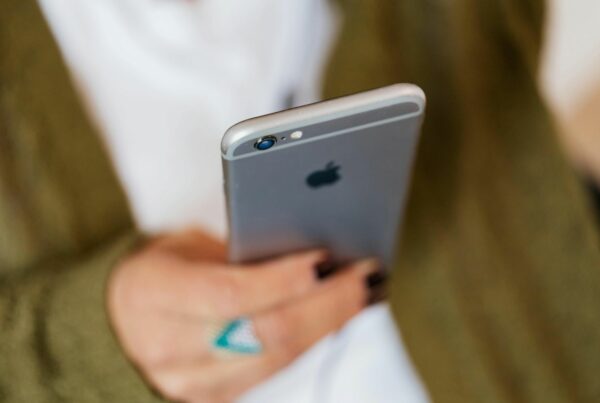If you are under 21, you probably cannot conceive of an unconnected world. For many, mobile devices are literally an extension of their arm. How did we get to this world – 7.1 billion people and 7.2 billion mobile devices, where communication, pop culture, business, news, and personal social lives are completely intertwined – and completely ubiquitous?
The history of Wi-Fi is really the history of modern communication. Following are some, although clearly not all, of the highlights that led us to modern Wi-Fi.
Some dates of the evolution of Wi-Fi
1896. World population is ~1.6 billion people. AT&T has about 500,000 telephones in the Bell System. Guglielmo Marconi develops the first wireless telegraph system, establishing the foundation for all future radio technology.
1947. World population is now ~2.6 billion. Most homes don’t yet have television, but the first ever mass audience of ~ 3.9 million people crowd into taverns to watch the first televised World Series. The merger of computers and communications is born with the invention of the transistor. Bell Labs scientists John Bardeen, Walter Brattain and William Shockley win the 1956 Nobel Prize for this epic invention.
1962. 9 out of 10 US households now have a TV – 52 million sets. Telstar, The first communication satellite, is launched into orbit.
1969. Over 125 million people tune in to watch the Apollo 11 Moon Landing – mostly in black and white. Arpanet, the first workable prototype of the Internet, is launched. It uses packet switching to allow multiple computers to communicate on a single network.
1985: Over 340,000 US citizens carry cell phones. The FCC releases 3 “garbage bands” for use without a government license: 900MHz, 2.4GHz and 5.8GHz, radiofrequencies then allocated to non-communication purposes like microwave ovens. The IEEE ((Institute of Electrical and Electronics Engineers) and WECA , (Wireless Ethernet Compatibility Alliance) form soon thereafter. A set of media access control (MAC) and physical layer (PHY) specifications for implementing wireless local area network (WLAN) called 802.11 (Max 2 Mbps) is developed..
1990. 12.5 million cell phone subscribers worldwide. Computer scientist Tim Berners-Lee, with the help of Robert Cailliau, completes the first successful communication between a computer and a server, a critical step in the development of the World Wide Web.
1997 – 2000. World population has reached ~6 billion people. 140.2 million personal computers are sold worldwide; more than half of US households now have a PC. A committee, made up of engineers from NCR Corporation, Bell Labs, and IEEE agree on an industrywide wireless standard; a data¬transfer rate of two megabits per second, using either of two spread¬spectrum technologies, frequency hopping or directsequence transmission. 802.11a and 802.11b, (Max 11 Mbps) are released, and a big explosion in wireless capabilities occurs. In 1999, “IEEE 802.11b Direct Sequence” is renamed “Wi-Fi” by cobrand-consulting firm Interbrand Corporation. Lucent develops a Wi-Fi adapter for under $100, and Apple introduces Wi-Fi on the iBook, under the brand name AirPort.
2003 – 2007. The number of mobile-phone users in the U.S. surpasses the number of conventional land-based phone lines. Steve Jobs unveils the very first iPhone, a Wi-Fi dependent computer that happened to make phone calls. 802.11g 802.11e and 802.11n are released (with 802.11n topping out at Max 600 Mbps).
2009 – 2015: Starbucks announces free Wi-Fi at all their shops. Mobile digital media time in the US is now significantly higher at 51% compared to desktop (42%). Social media plays a major role in The Arab Spring. Barrack Obama@POTUS sends his first Tweet. And the number of mobile devices now outnumbers humans. 802.11v, 802.11k, 802.11u, 802.11acI, and 802.11acII are all released. (With 802.11acII topping out at Max 6.93 Gbps).
So here we are. From the invention of radio frequencies, to a Wi-Fi protocol speed now 3548 times faster than when it was first invented. The history of Wi- Fi really is the history of all modern communication.
UCOPIA and Wi-Fi were born at the same time, and grew up together with smartphones and mobile internet. We want to share our dreams with you, contribute to the next breaking innovations, and deliver to you a better mobile experience.
Bibliography
ZACHARY DAVIES BOREN, “There are officially more mobile devices than people in the world” The Independent, 10/7/2014, http://www.independent.co.uk/life-style/gadgets-and-tech/news/there-are-officially-more-mobile-devices-than-people-in-the-world-9780518.html
“Imagining the Internet.” Elon University School of Communications, http://www.elon.edu/e-web/predictions/150/1870.xhtml
[1]“Wireless History Timeline”, Wireless History Foundation, http://www.wirelesshistoryfoundation.org/wireless-history-project/wireless-history-timeline“Apollo 11 in Popular Culture”, Wikipedia, https://en.wikipedia.org/wiki/Apollo_11_in_popular_culture
“Arpanet, the First Internet” Living Internet, http://www.livinginternet.com/i/ii_arpanet.htm
Infoplease, http://www.infoplease.com/ipa/A0933563.html
“A Brief History of Wi-Fi”, The Economist. Technology Quarterly. June 10, 2004, http://www.economist.com/node/2724397
“The Invention of the Internet”, History.com, http://www.history.com/topics/inventions/invention-of-the-internet








